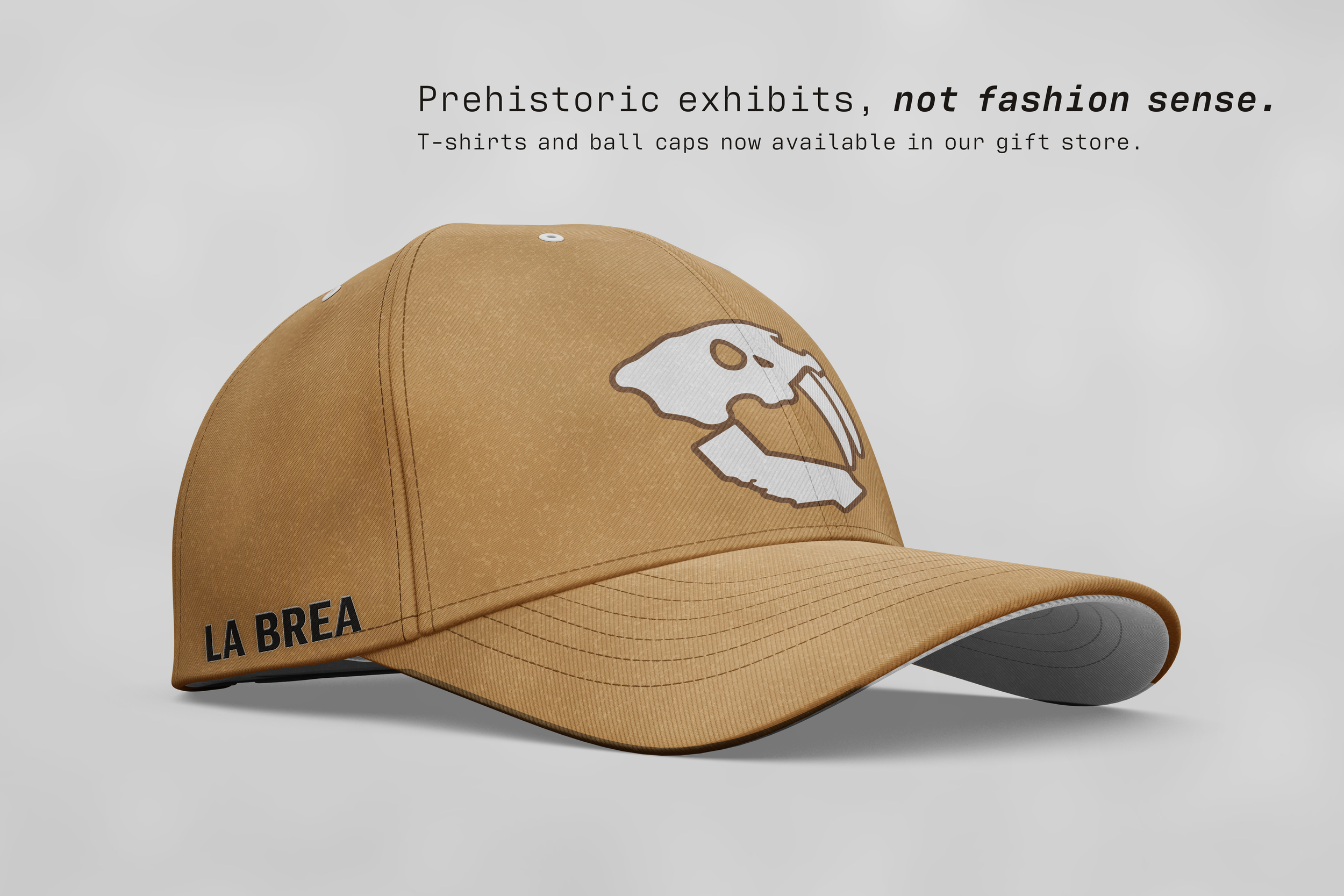About the Brand
Millions of years ago, asphalt began to bubble up through the ground and form large lakes in what is now Los Angeles, California. Mankind used this plentiful natural resource for many years, unaware that an even more valuable one was below the surface. At the beginning of the 20th century, scientists realized that these lakes had preserved a remarkable number of prehistoric specimens that had fallen in, providing a record of the creatures that roamed California during the Ice Age. Rancho La Brea became a dig site, and in 1977 a museum was built onsite to give the public a glimpse into the inner workings of La Brea’s fossil excavation projects.
The La Brea Tar Pits have since become an iconic piece of modern LA, greeting thousands of visitors yearly with constant discoveries being made by volunteers and staff. Museumgoers can watch fossil excavations in the numerous pits surrounding the museum, watch fossils be cleaned and displayed in the fossil lab, watch life-sized models of sabertooth cats come to life at the Ice Age Encounters show, and more.
Concept Collage
Onliness Factors
What: The only museum and prehistoric National Natural Landmark in California
How: that brings the Ice Age to life
Who: for museum-goers
Where: in Los Angeles
Why: who want to visit a unique, active paleontological site
When: in an era where we are rapidly advancing into the future without considering our earth’s past.
Our museum is the only landmark in America that is an active, educational paleontological site open to the public.
Identity Basics

Brand Goals
The La Brea Tar Pits are a fascinating gateway to the Ice Age, located smack in the middle of sunny Los Angeles. Described by the International Union of Geological Sciences as the "richest paleontological site on Earth for terrestrial fossils of late Quaternary age" and designated as a National Natural Landmark, nothing else exists quite like it in the United States. Our museum’s goal is to blend the modern and the prehistoric, showing the value of looking into the past while humanity considers our planet’s future. With environmental and climate change being on the forefront of global issues, studying the Ice Age is more relevant now than ever. During this time of constant change and human innovation, we intend to show the public that investigating the earth’s history is key to scientific advancement, and more importantly, our species’ well-being.













